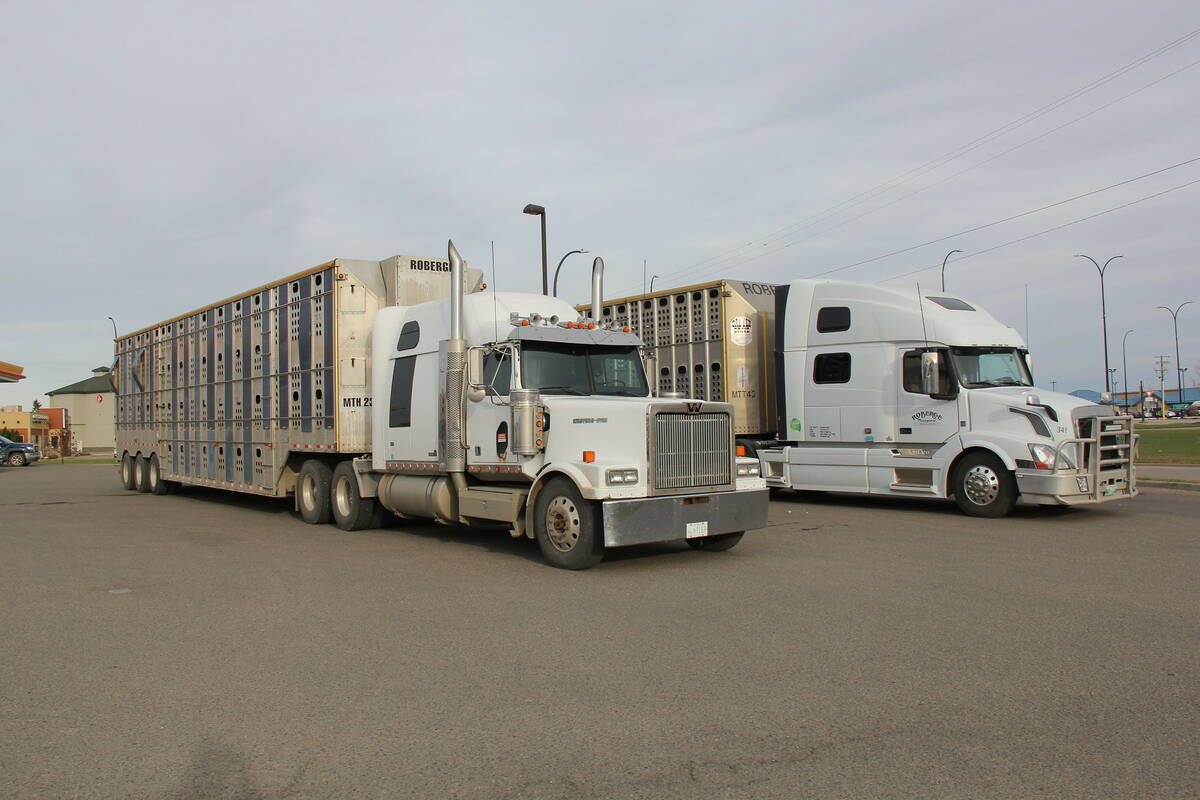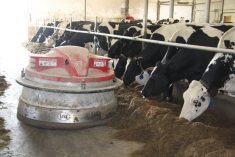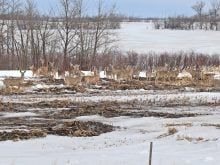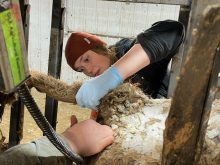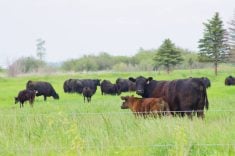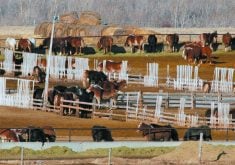Glacier FarmMedia – When the Canadian Food Inspection Agency began to muse about requiring a rest stop for cattle after 36 hours of transportation, Agriculture Canada and Canada’s beef industry funded research to determine whether a rest stop would benefit weaned calves.
The research was led by Karen Schwartzkopf-Genswein’s team at Agriculture Canada’s research centre in Lethbridge.
Though the research began before the regulations were revised, the regulations were changed before the research could be completed.
Read Also
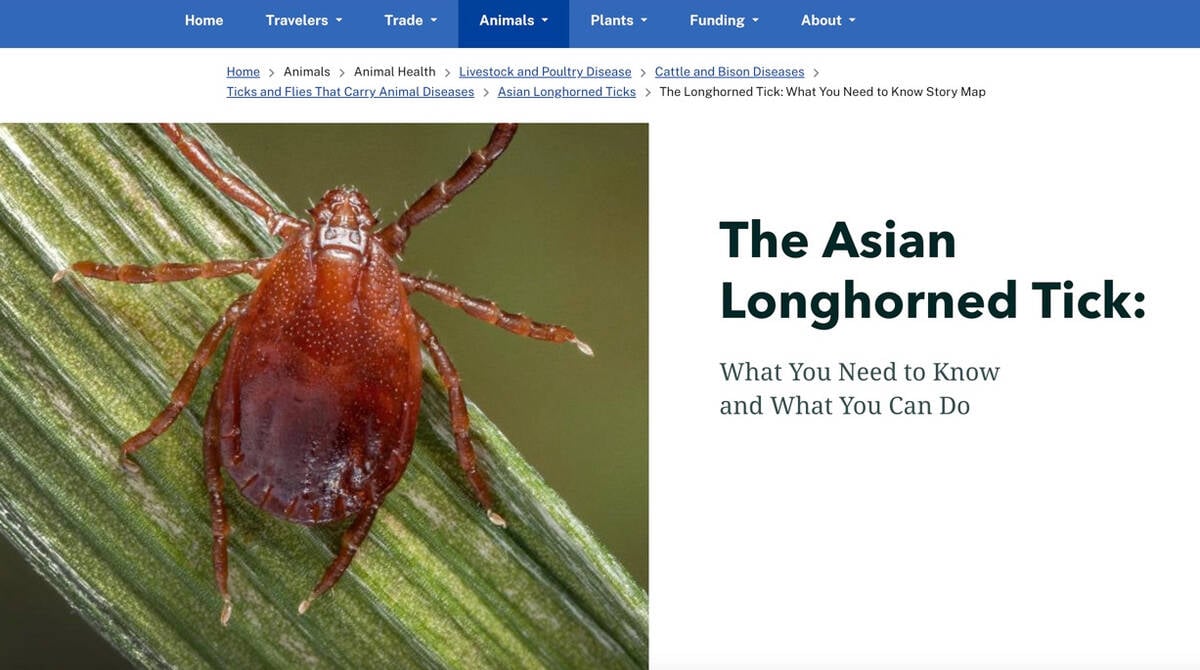
New World screwworm not seen as trade threat
Canadian cattle producers shouldn’t be worried about the New World screwworm, which has become a massive concern for ranchers in Mexico and is threatening the southern United States
Three consecutive research trials conducted in 2018, 2019 and 2020 found that providing a rest stop during long-haul transportation offered no consistent, measurable benefits for animal welfare.
A companion project led by Trevor Alexander in Lethbridge looked at bacterial populations in the respiratory tract of those same calves.
Microbiological testing from the 2018 transportation trial found that rested calves had more bacteria associated with bovine respiratory disease in their respiratory tract than unrested calves. The microbiological results from the 2019 and 2020 transport trials reports were published recently.
This report presented the results of the last two long-distance rest-stop transportation trials conducted by Agriculture Canada in Lethbridge in 2019 and 2020.
To recap, in the fall of 2019, 320 newly weaned crossbred steer calves from one ranch were delivered to the research centre.
They were processed and adapted to the feedlot diet and environment for four weeks to ensure the effects of weaning stress had passed and would not interfere with their response to transportation.
After four weeks, they were loaded, transported for 36 hours and unloaded. Half of the calves were immediately reloaded and hauled for four more hours to the research facility. The other half were rested in pens with bedding, feed and water for 12 hours, reloaded and hauled the final four hours to the research facility.
In the 2020 trial, 328 freshly weaned crossbred steer calves from two ranches were processed at the research station but not allowed to acclimate to the feedlot environment.
They were loaded and hauled for 20 hours (roughly corresponding to a trip from Lethbridge to Thunder Bay) and unloaded.
Half of the steers from each ranch were immediately reloaded and hauled for another 15 hours (roughly the time from Thunder Bay to Kincardin, Ont.) to the research facility. The other half were rested in pens with bedding, feed and water for eight hours before being reloaded and hauled the final 15 hours to the research facility.
During both the 2019 and 2020 trials, deep nasopharyngeal swabs were collected from 12 rested and 12 unrested steers multiple times: before they were loaded the first time, when they were unloaded after the first leg of the trip, before they were reloaded after the rest period, after the final unloading at the research station and at several subsequent points over the following four weeks.
The research team identified the relative proportions of different bacteria in these samples and assessed whether providing a rest stop affected the prevalence of different respiratory bacteria.
The most abundant bacteria identified in all nasopharyngeal samples included Mannheimia, Pasteurella, Histophilus, Mycoplasma (all of which are known to be involved in bovine respiratory disease), Moraxella (which is sometimes identified in BRD cases) and Streptococcus (which may predispose calves to BRD by producing an enzyme that will break down the mucus that protects the lining of the respiratory tract from disease-causing pathogens).
All of these bacteria, except Pasteurella, were more abundant in samples collected from rested calves than in samples collected from unrested calves.
None of the three transport trials showed that providing a rest stop during long-distance transport provided any clear or consistent benefits for the health or welfare of feeder calves.
The three microbiome studies now provide consistent evidence that rest stops may pose a risk to the respiratory health of calves.
The experimental groups were too small to measure statistically meaningful differences in actual illness due to BRD, but more rested calves were treated for BRD than unrested calves in both 2019 (11 rested versus seven unrested) and 2020 (17 rested versus eight unrested).
The bottom line is that Canada’s beef industry and Agriculture Canada funded these studies to generate the information the Canadian Food Inspection Agency would need to formulate science-based updates to the regulations governing cattle transport in Canada.
Unfortunately, the CFIA imposed the requirement to provide a minimum eight-hour rest stop after 36 hours of transport before the research could be completed. We remain hopeful that the CFIA will take this science into consideration and rethink the rest stop requirement. It’s not too late to do the right thing.
Reynold Bergen is the science director of the Beef Cattle Research Council.

